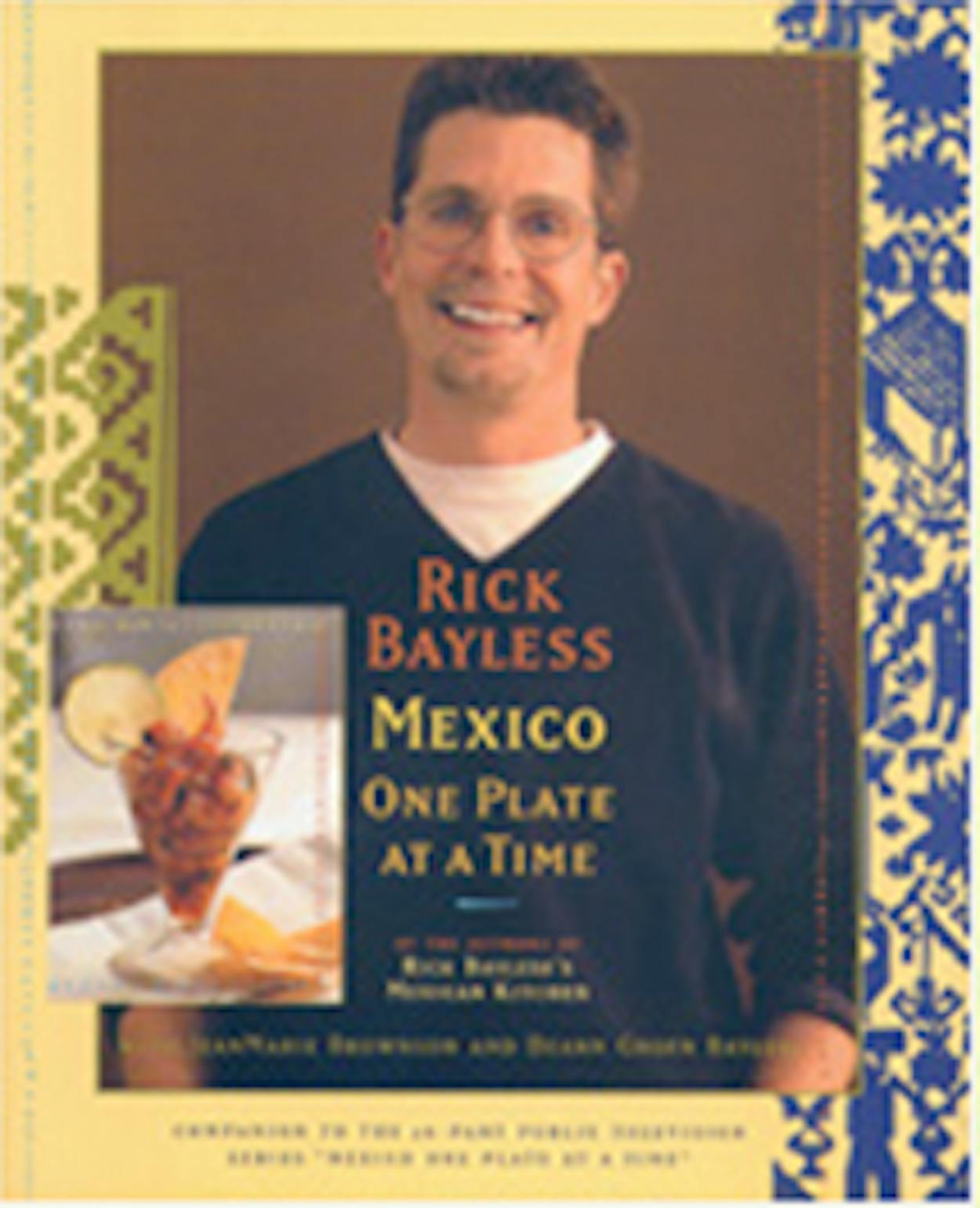Rick Bayless knows Mexican food. Yes, he’s a gringo. But don’t hold that against him. The award-winning chef has dedicated his life to studying and creating authentic Mexican cuisine. His popular restaurants, best-selling cookbooks, highly-rated cooking show, and product line prove he’s doing something right. Here, find out more about this Mexophile and the cuisine he loves so much.
texasmonthly.com: How did your passion for Mexican food and culture develop?
Rick Bayless: It’s just one of those things that happens. It’s hard to describe how or why you fall in love with somebody. When I first went to Mexico, I just fell in love. It felt like going home.
texasmonthly.com: You’ve traveled to all of the Mexican states in order to study the different flavors. How much does the cuisine differ from region to region?
RB: It varies much more than it does in the United States. It’s like the difference between the cooking of Germany and Italy. The food in the Yucatán is totally unrelated to the food in Central Mexico or down in Oaxaca.
texasmonthly.com: Which region most influences your cooking?
RB: I try to do something from all of them, but I would say the greatest influence in our cooking comes from the triangle that is Mexico City, Veracruz, and Oaxaca.
texasmonthly.com: What is the difference between authentic Mexican food and Tex-Mex?
RB: Tex-Mex doesn’t have much variety in it, whereas real Mexican food has a huge repertoire of soups, salads, snacks, and main courses. A traditional Mexican meal starts with a soup; then a rice course; then the main dish, which is usually a stew with a full-flavored chile sauce; and finally dessert. When you explain this to Americans, they look bewildered and ask, “Well, where do the enchiladas fit in?” No one would think of eating enchiladas as a main dish in Mexico. Tex-Mex food developed in the frontier when Texas was part of Mexico. Texas was considered the outback, and in those kinds of places, elaborate cuisine doesn’t develop. That is why Tex-Mex is usually simple and basic.
texasmonthly.com: You host a cooking show, write cookbooks, run two restaurants, and have your own line of food products. Of these, what are you most passionate about?
RB: I love doing all of it. I am a teacher at heart, so I wouldn’t give up my television stuff or my writing. I am fourth generation in a family of restaurant people. Running a restaurant is my great craft, and I love that I get to do that everyday. Finally, the food products give me the opportunity to introduce people across the United States to that wonderful regional flavor of Mexico. It’s all satisfying.
texasmonthly.com: Your endeavors have been quite successful. Your show is highly-rated. Your books are best-sellers, and getting a table at one of your restaurants is no small task. Why do you think people are responding so well?
RB: I think it’s a combination of love and talent. I really love what I do. I have so much passion for it. And it helps to be a good cook.
texasmonthly.com: You have several Mexican cookbooks out. What is the focus of your new release Mexico: One Plate at a Time?
RB: I have done a lot of work on the regional cooking of Mexico. My book Rick Bayless’ Mexican Kitchen is like a master class for people who want to delve deeply into the traditional cooking of Mexico. But one day I realized that in all my work, I had failed to identify the real classic dishes of Mexico and give direct and simple recipes for cooking them. So my new book gives you those dishes that make every Mexican’s mouth water from one end of the country to the other. It’s not a huge book in terms of number of recipes, but each one is so thoroughly presented that you really get an understanding of who eats it, when they eat it, how they eat it, and what the variations are from region to region. The recipes are really good. We put a lot of time into it.
texasmonthly.com: What ingredients should a person have in their kitchen at all times?
RB: I don’t know because everyone likes different flavors. But in my kitchen, I always have dried ancho chiles, several cans of chipotle chile, green chiles, Mexican oregano, limes, and black beans. I grow the herb epazote because you can’t always find it in the grocery stores, and I think its flavor is phenomenal. Those are my basics.
texasmonthly.com: After a long day of working with food, what do you crave when you get home?
RB: Only bed. I work nights, and when I get home I go straight to bed. I eat two meals a day at my restaurant. I guess that shows how much I love the food.
texasmonthly.com: What projects are you currently working on?
RB: My eleven-year-old daughter and I are working on a book of our experiences cooking with families all over the world. We’ve had the wonderful opportunity to cook with families in a number of different cultures—not just Mexico, but Thailand, Morocco, and France. We got some really great home-style recipes that reflect those families’ cultures. It will be finished next year.







